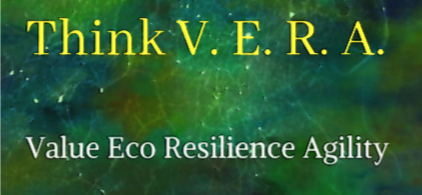Thought Supply Chain Leaderhip
Let´s change to become more successful - leaving your comfort zone, with professional support!
Once your company is in a turnaround situation, the time is critical to identify quick wins ! Nevertheless, you also need to build a strong business model and your digitalization model, required by law, banks and turnaround managers.

Vera Horst
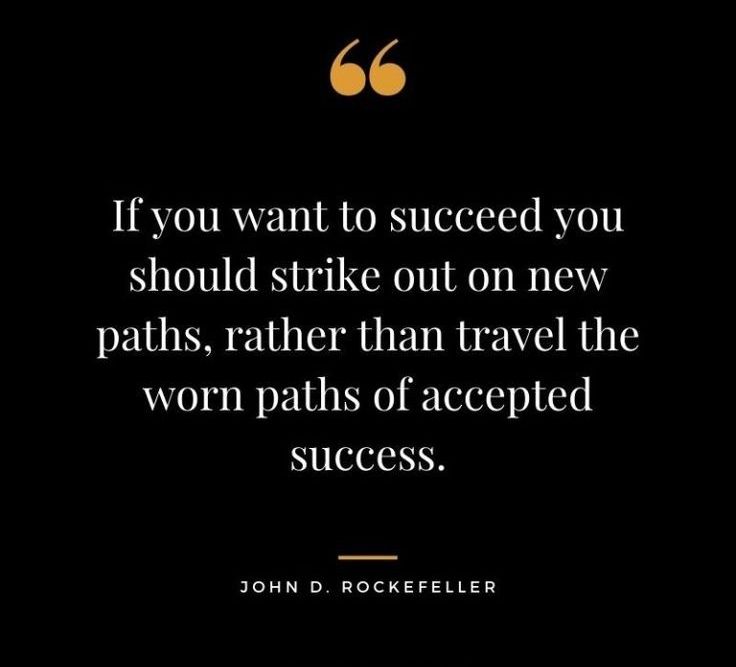
Define your future success compass
No company can start from zero! But you can rethink your current business models and redesign to more value and success!!
Focus on your core competencies, define your clear goals and targets, and set up the ideal roadmap for this change process!
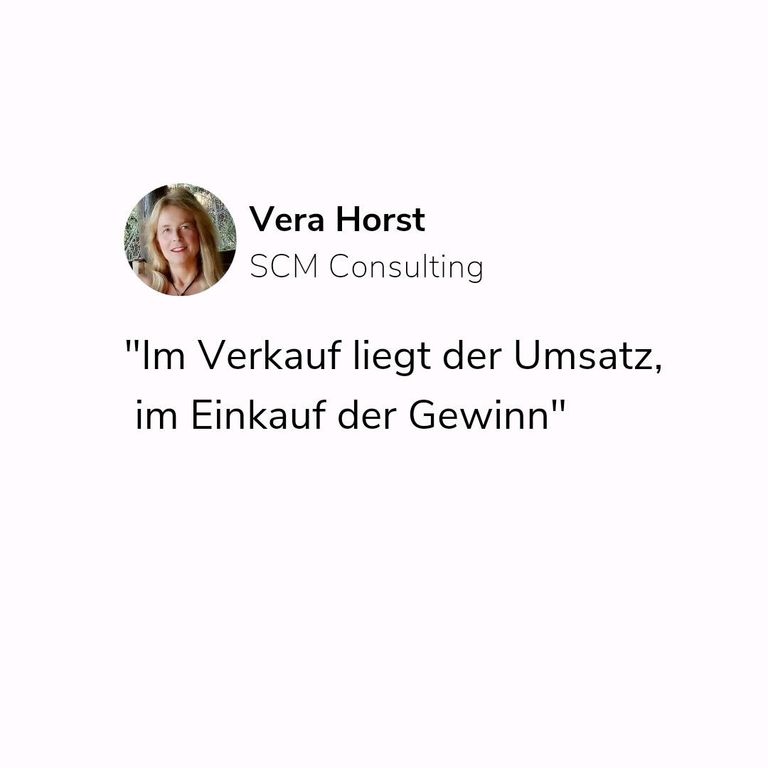

Sourcing & Procurement 2 B
The time is now !
- Procurement costs go up to 50% of your entire Supply Chain Costs. They still show a huge potential for cost reduction. Changing business models with intense digitization will now allow for new negotiations with suppliers. They all want to remain or stay part of their established supply chains. I recommend to go for product groups and categories that are highly competitive and start re-negogiating with A- /and selected B-suppliers for top-conditions now.
- Should-costing - to achieve best negotiation position to your suppliers.
- Focus on Cost Leadership – advantages of leaders in innovation & technology are not long lasting, since product life cycles get shorter. Competition in costs will become stronger, mainly with the Asian competitors. Therefore the potential of optimized procurement along the entire supply chain will become one of the key success factors.
- Procure-to-Lotsize 1 – Project-& Engineer-to-order driven businesses (eg machinery industries, automotive, etc) are challenged by small lotsizes going to lotsize1. Forecast demand and derive optimum procurement strategies is key challenge.
SCM needs to balance the effects of small/individual series versus mass/large quantity production. All effects on scalability, modularization and standardization need to be explored.- That means to categorize product design, planning and production/supply by aspects of similarity/identity.
- Types of products, production process, components, lead times
- Types of configurations and assembly of modules and lines
- Types of risks, sourcing markets, docs/certificates requested
CSR (Corporate Social Responsibility) – all procurement processes and suppliers need to meet the CSR requirements, by bounderyless control of the entire supply chains. This goes specifically for all pharm & health care supplies, and all chemical supplies. - Accumulated investments – change your strategy and invest now! While having an advantage to negotiate better prices & services in a push/supply market. Going against trends for future competitive advantages.
- Critical check and outsource all your non-core competencies (products and services).
- Design-to-value for your entire supply chain - by taking all relevant aspects into account during the development & design of new products. These related aspects are costs, risks, supply logistics, CSR (Corporate Social Responsibility), documentation and certificates needed for procure & supply of these new products.
- Concurrent planning- esp. in the Construction Industries to manage the integration of Project Management and multiple suppliers for time and budget critical projects.
Liquidity & Working Capital Optimization (WCO)
The potential of optimizing your liquidity is huge - along your e2e supply chain !
Staatliche Finanzhilfen sind sinnlos – ohne konsequente Neuausrichtung des Unternehmens!!
Die Gefahr liegt nicht in der Überbrückung finanzieller Engpässe, aber im Erhalten des Status Quo.
Zahlreiche Insolvenzen werden kommen, wenn nicht konsequent an der Neuerung des Unternehmens – auch teilweise mit radikalen Methoden – gearbeitet wird.
Das Working Capital Management – oder anders gesagt : Die Optimierung des Nettoumlaufvermögens- ist ein entscheidender Hebel zur Erreichung der finanziellen Unabhängigkeit. Denn jeder Kredit muss irgendwann zurückgezahlt werden.
Jeder Turnaround erfordert das Erarbeiten
- einer nachhaltigen Sanierungsstrategie
- eines sich daraus ableitenden resilienten Geschäftsplans
- einer realistischen Digitalisierungsstrategie.
Quick Wins durch
- gezielte Bestandsmassnahmen
- Senkung der Einkaufskosten
- Abverkauf nicht wertschöpfender Assets
- Bereinigung des Produktportfolios unter Total Cost to Sales, auch zur Unterstützung der Produktionsplanung und Erhöhung der OEE (Anlageneffizienz)
- uvm
Daraus leiten sich mittel- bis langfristige neue Prozesse und Anforderungsprofile an die Unternehmen ab.
Let´s talk Supply Chain Excellence!
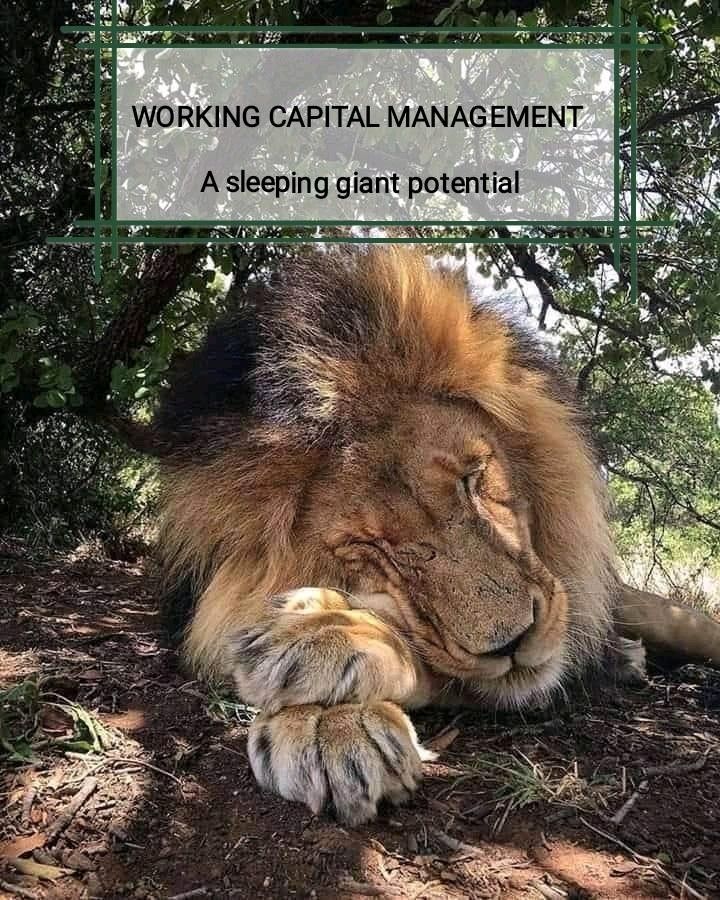
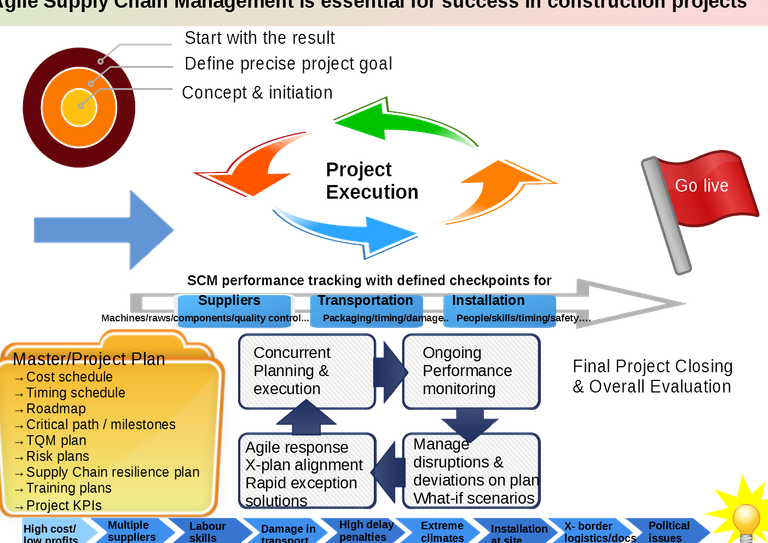
Construction Industries
& SCM
Agile Supply Chain Management is key essential to construction success 👍
No matter how precise your master - & project planning is done, construction projects
⚡show an immense level of complexity, uniqueness, unpredictability, disruptions and volatility
⚡ are measured by costs cut down to the bone with no tolerance for deviations from investors; neither in costs nor in timing or in quality
⚡ are directly impacted in meeting milestones by any supply chain delays; no matter if logistics, engineering, raws or packs caused the issue
So 👆 avoiding or at least mitigating the unexpected exceptions and disruptions, there is a strong need for
💪 Agility ⚡no planning can be 💯
💪 Concurrent planning along the entire supply chains ⚡ integrated with project management tools
💪 Access to real time data along all defined supply chain & project management chain ⚡closing the gap between ERP and Planning
💪 What if analysis ⚡ with real time decision-making capabilities
Supply Chain Excellence is the key to construction successes 👷♂️👌👍
The tools and methods are fairly in place🛠️⚙️
Let's talk about how to make them your companies success story👍
KPI
KPI & Risk Management experience a tremendous push in importance 👆
Though all companies have sort of KPI & Risk Management, I mainly experience:
🤔 Quantity over quality - some measure everything
🤔 No ownership and follow up for evaluation of KPIs and achievements of results
🤔 Lack in process related KPIs, for measuring process efficiency and effectiveness, and interrelated impacts between process partners
🤔KPI & Risk Management are done once a year, prior to end of the business year - but not installed as a continuous process for improvement and change management
🤔 Drivers are mainly the Finance Department with Support of Controlling. But KPI & Risk Management is all employees business; based upon a established process and supporting tools/dashboards.
🤗 KPI & Risk Management are not seen in close relation, but treated seperately.
🤔 Managers time is " eaten up" by projects, there is too little time for innovation. KPIs are complicated to read, long lists by controlling. No focus on the key important topics. So many leave it to controlling.
🤔New digitalization KPIs are not included to measure success and progress for digitization
🤔 A continuous improvement culture is not established for KPI & Risk Management. This culture requests responsibility, ownership for KPIs,and the environment to take actions.
There is a huge potential for improvement 💪
Lets talk about existing best practices to install this methodology within your company 👆
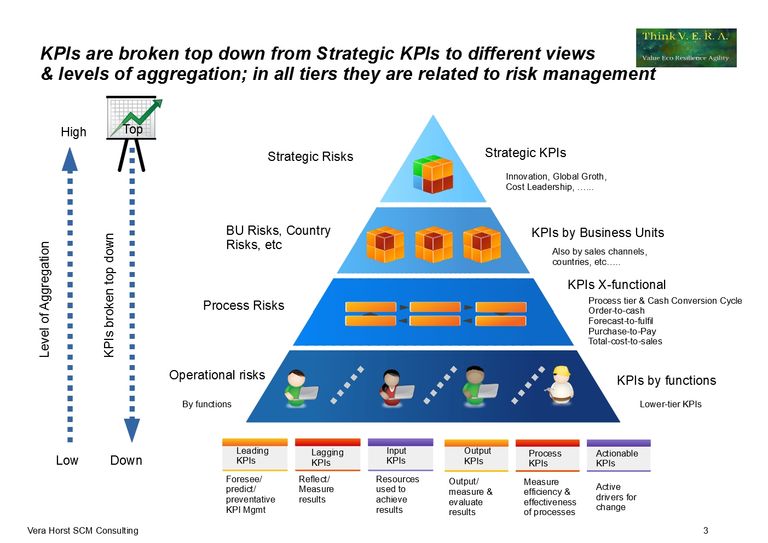
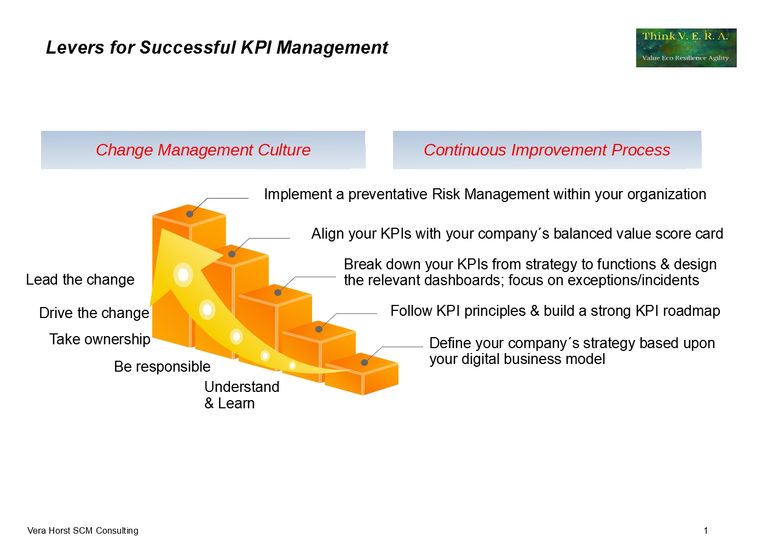
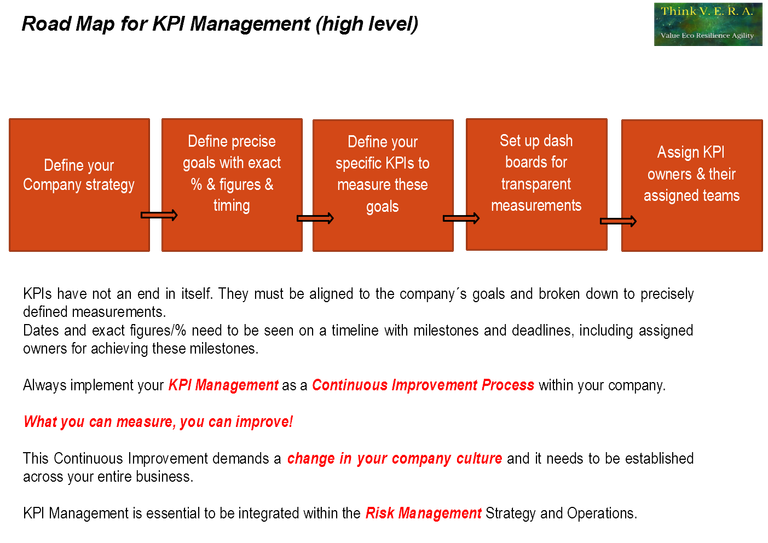
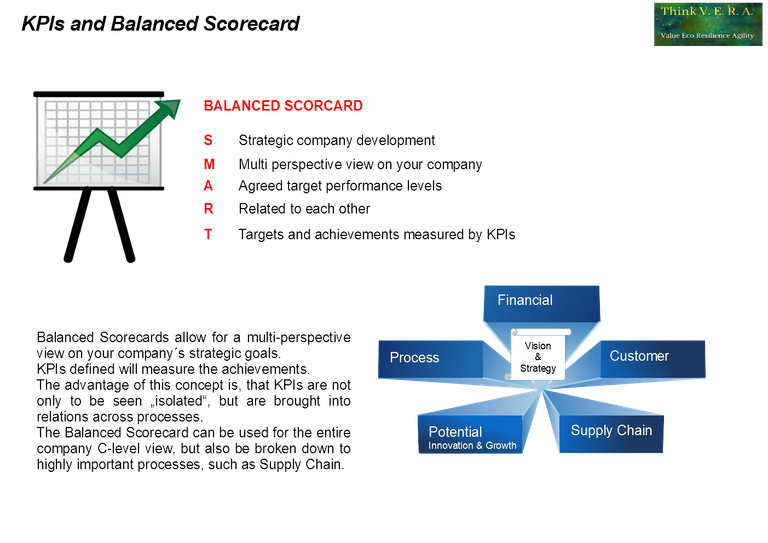
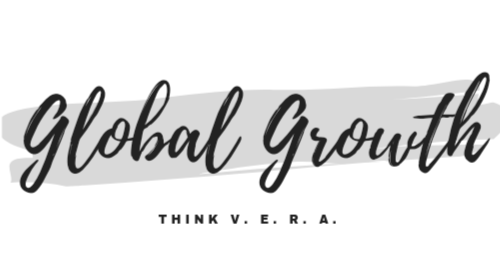
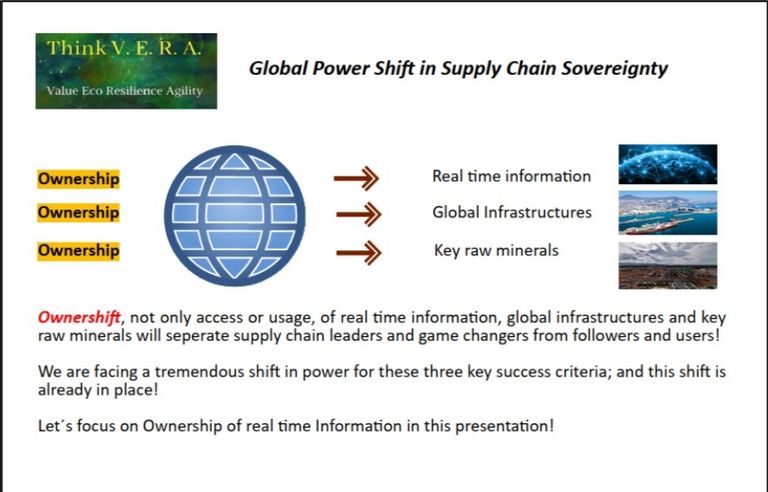
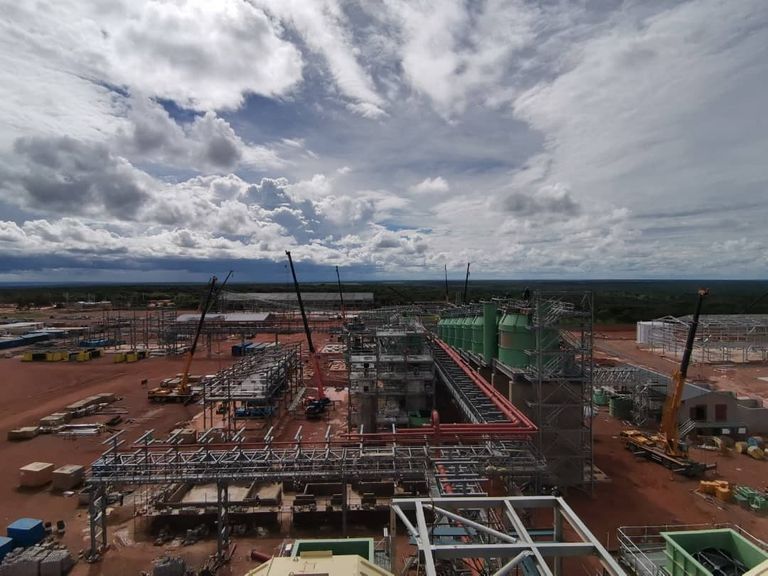
Power shift in global SC sovereignity
It´s all about ownership of real time information, infrastructures & raw minerals !
The recent situation has proven how supply chains are impacting our daily life, everywhere and anytime !!
As long as we get all products and resources we want, it's fine. But what in case of gaps and breaks in supply?
How capable are we in managing volatility, uncertainty, complexity and ambiguity (VUCA)? Current disruptions and future ones?
First of all we need to accept, that nothing can be taken for granted 👆
Building resilience is a strong challenge; driven by digitization and strong supplier and customer relations. But focussing only on these factors implicates the danger to ignore changes in global supply chain sovereignty !!
A great threat is already there, and will become stronger by the day 👆
Supply Chains globally are experiencing a tremendous shift in economical power ! 🌍
It's all about OWNERSHIP of
❗ Real time information
❗ Resources (minerals, raws and energies)
and
❗ Infrastructures
Let me be a bit provocative now 😊,
Whereas many Politicians in Europe are still in a sleepwalking mood and spinning their wheels in their microcosm, other states - esp Asia and Russia - intensivly
- claim key buinesses in emerging markets (buy, build and grow in the food and mineral water industries, as well as health care, pharm and chem)
- get global sovereignty for key mineral resources
- invest in and hold main infrastructures worldwide
- invest in renewable energies, but also strongly emphasize the need for modern and controllable atomic power
To get this straight, just by few examples what I experience in Africa and Russia:
- China´s „Silk Route Initiative“ is already on its way and expected to be finished in 2049, covering all relevant infrastructures for trade from China across Eastern Europe.
- The second big production, supply and trade infrastructure is growing in East-/South Africa.
- Gauteng Area / harbours on east/south coasts: Chinese investors buy huge properties and build mega logistic-hubs ; besides investing, these companies mainly own and control them.
- China claims for mining and construction industries in order to get hold of the most important raw minerals, but also for building the relevant infrastructures to supply and process these minerals.
- Mining of uranium (currently in Namibia), copper (world largest plant in DRC), coltan (Columbite-tantalites in DRC, Rwanda, Nigeria), platinum, lithium, silver, nickel, …..
- World largest standalone plant for methanol with > 2,2 mio tons/year plus the relevant gas pipelines are built in Northern China.
- Shared investments of estimated USD 300 million from China togther with the Russian railways (RZD) into a container terminal at Moskau.
- Approximately EURO 280 million invested into a coal terminal with > 18 tons/year at Murmansk (russian northern coast) plus infrastructure (road , railway, harbour)
- Africa: Investments into hydro power and natural gas to fulfil the demand of rapidly growing populations.
- And many more..
This rapidly increasing ownership and control of infrastructures and raw minerals will have a great impact on worldwide economical sovereignties. Growing markets for European investors will more and more controlled by Eastern States.
We need to understand the upcoming clustering of economic power in key important growth markets. And we should not rely on our politicians. We have a weak Minister for Foreign Affairs, more acting than taking actions! And he is definitely not having strong influence in the world economics! And there is not much progress to be expected after any elections.
So one important success factor for going global is missing: strong political support to address company needs – within Germany, Europe, but also to gain foothold in the biggest growing markets, such as Africa!
The footprints of European companies need to be set now!! Besides restructuring and furthermore establishing your companies within your local markets, start working on a growth strategy to go global.
Urheberrecht ©
Alle Rechte vorbehalten.
